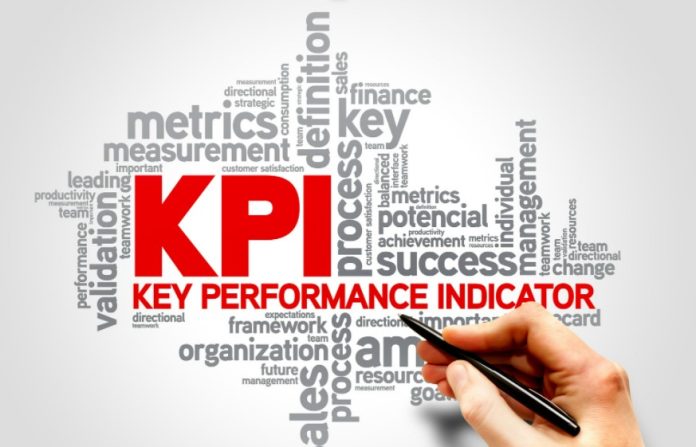Table of Contents
Key performance indicators (KPIs) are an important way to measure your business’s success and identify areas for improvement. There are dozens of KPIs that your business could use to track its success, and the ones you choose will depend largely on your business’s operations and objectives. However, a few KPIs can be almost universally useful to companies of any size.
Key Performance Indicators That Every New Business Should Monitor

You should carefully consider all areas of your business when setting up methods to track KPIs. This article will discuss some of the most common and crucial KPIs for new companies to monitor.
1. Know Your Business Objectives
An essential first step is to know what your business objectives are. You should be as detailed as possible to identify which objectives you want to focus your KPIs on. Using a mix of specified and broader objectives can be beneficial.
2. Set Goals


Once you have identified your objectives, you can start setting short and long term goals and start working on achieving your goal. For instance, you could set a goal for the profits you hope to achieve during the first year of business and for the following five years. You could also set targets for specific areas of your business, such as the level of satisfaction achieved from customer contact.
3. Understand Your Level Of Repeat Business
Repeat business is critical to a business’s success. Monitoring the level of repeat customers can help you identify whether marketing and other strategies are successful and help you to tweak your practices in real-time to boost retention. You should be aiming to have a high level of repeat business unless the products or services you offer are, by nature, one-offs.
4. Watch Revenue Growth Over Time
Tracking your revenue over time can help you identify key trends. You should monitor on a weekly and monthly basis. This can help you identify times and reasons for higher or lower sales. Some trends may be based on the time of year. For instance, many businesses see sales fall slightly in January as many customers tighten their belts after Christmas.
You should also compare data to previous years and identify whether you did anything different that could have resulted in higher or lower sales. Your revenue growth can also help you determine if you are keeping up with customer needs.
5. Manage Your Cash Flow Properly
Cash flow is crucial for any business to remain operational. One of the best KPIs to monitor your cash flow is the net cash flow. This means you should subtract the total cash coming out of your business from the amount coming in.


Poorly managed cash flow can be disastrous even for highly profitable businesses, so you should monitor this KPI closely and take action should your cash flow become negative. While negative cash flow over one period is not necessarily caused for significant concern, it should not be a regular occurrence.
6. Monitor Gross Profit
Your gross profit is the amount of revenue left over after the expense of producing the product are paid. The remaining income will give you an idea of what you can spend on things like salaries, new technology and more. You should aim to make your gross profit as high as possible so that you have plenty of revenue to invest back into your business and remain operational.
The gross profit KPI can help you identify whether you are charging the right amount for your products or services. A low gross profit may mean you will have to raise your prices to see the best returns. You should put careful thought into your pricing structure to ensure you make profits while not driving customers away with higher prices than they’re willing to pay.
7. Utilise Employee Management Software
Understanding your team’s productivity levels is crucial to ensure there is maximum efficiency. You should use employee management software to help you keep track of your employees’ hours and see how different projects are coming along. This type of software can be beneficial for you and your team to track progress and identify areas for improvement. For an idea of what to look for, here is the Factorial HR employee management system, which offers extremely useful tools such as time tracking, training management, and employee performance appraisals. Employee performance management software such as this can help you keep an eye on your employees more effectively.
8. Prioritise Strong Employee Satisfaction
Employee satisfaction is vital to retain and attract the best talent to your organisation. The happier your employees, the harder they will work and the more loyal they will be to your business. One KPI to measure this is the employee turnover rate, showing how long each employee remains in your business.


A high level of turnover indicates that there is something missing in keeping employees satisfied. You should consider asking for suggestions from employees to find out how you can improve retention. It may be beneficial to use an anonymous survey so that employees feel comfortable expressing honest opinions.
9. Measure Customer Satisfaction To Improve Customer Care
Happy customers will be more likely to continue using your business rather than look elsewhere. You can measure customer happiness in a range of ways. You could look at the number of customer contacts resolved after one contact with your customer service team. Customers often get frustrated if it takes multiple communications to resolve an issue. As mentioned above, customer retention can be an excellent measure of customer satisfaction.
If you are concerned about customer satisfaction, investing in further training for your customer care team can be beneficial. It can also help to increase the number of staff you have working in customer care to ensure the wait times are kept to a minimum.
10. Improve Your Conversion Rate
The number of leads your business receives is vital to track, but it is near meaningless without being able to track how many of these leads convert to sales. If you have a poor conversion rate, it is important to see how you can adapt to boost this rate. It may involve providing additional training for your sales team, reconsidering your pricing structure or offering welcome deals to entice customers to make a purchase.
11. Monitor Your Website Traffic


Few businesses can survive in today’s world without a functional and aesthetically pleasing website design. The internet can be a huge pool of potential income, so it is crucial that you monitor your website’s traffic. You could use a tool like Google Analytics to help you monitor traffic levels and compare any spikes in the traffic you receive against various online marketing or other strategies.
12. Consider Social Media Engagement
Social media can be a great way to engage your audience and drive up business. You should monitor your accounts to see what kind of growth you experience and if your strategies are effective. Posting regular, engaging content is crucial to building a social media following, so you should ensure you put the work in to keep your followers engaged.
13. Track Your Break-Even Point


Knowing when your business will break even can help you identify the amount of business you need to maintain to keep your company viable. The break-even point is the time at which your business income and outgoings will match. Knowing this allows you to forecast when you will start turning a profit and start looking at ways to improve your profitability.






































